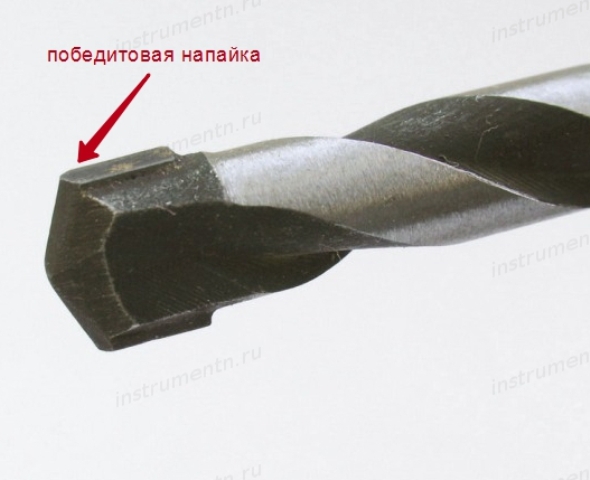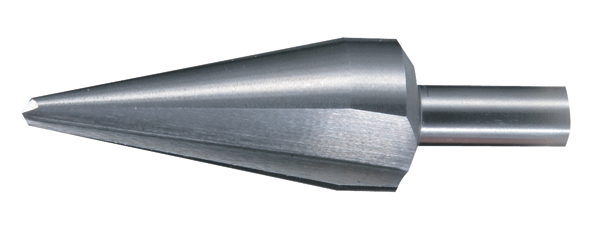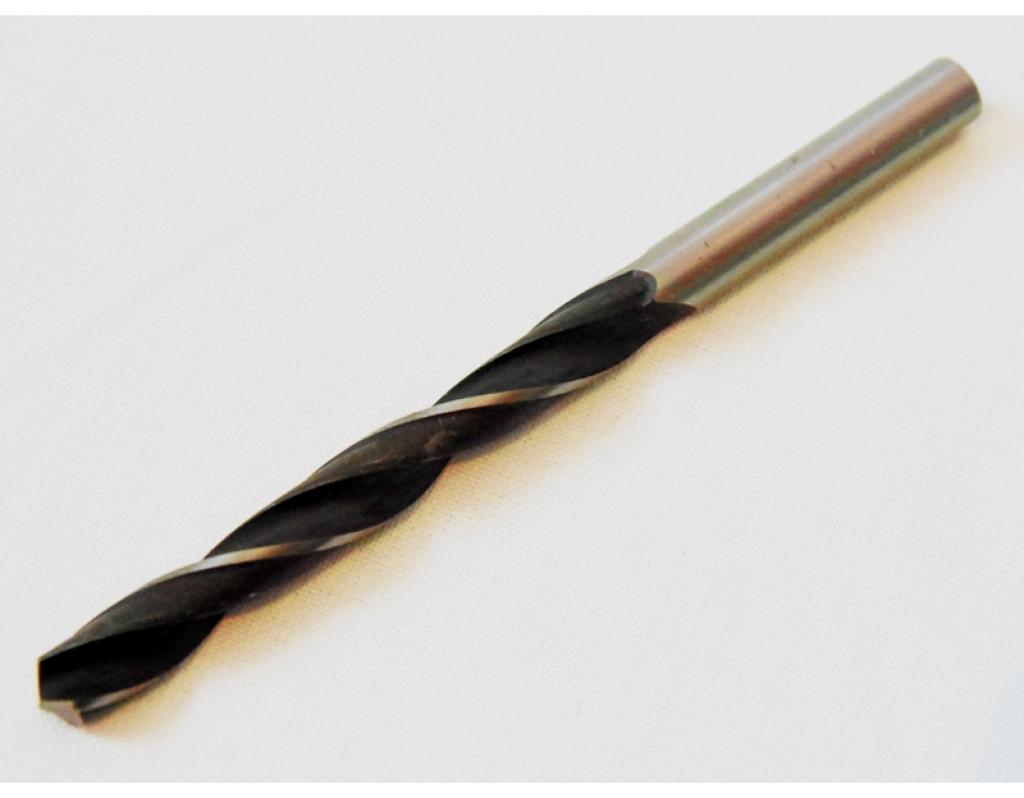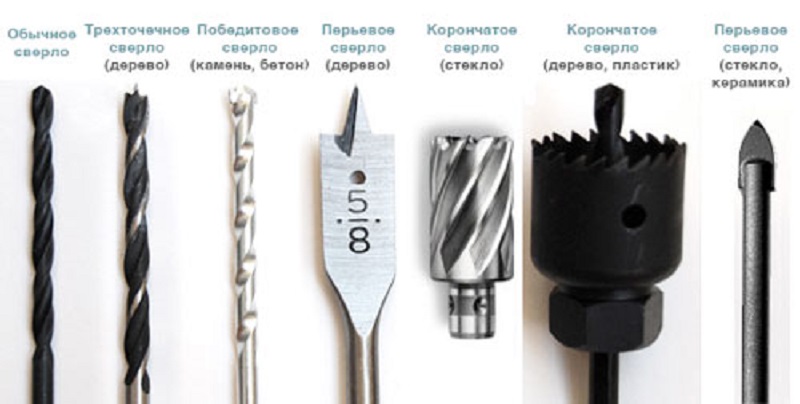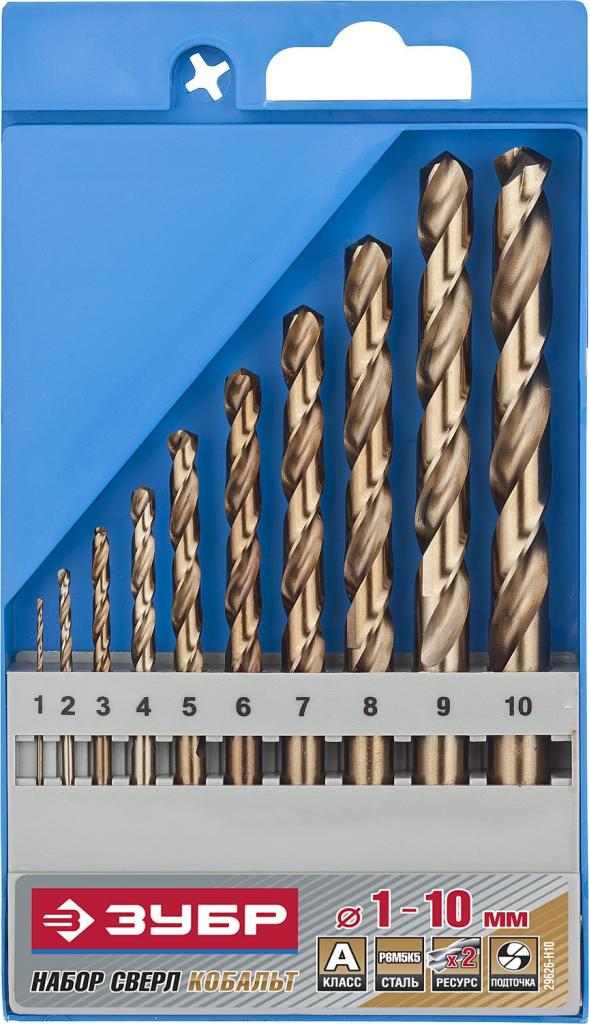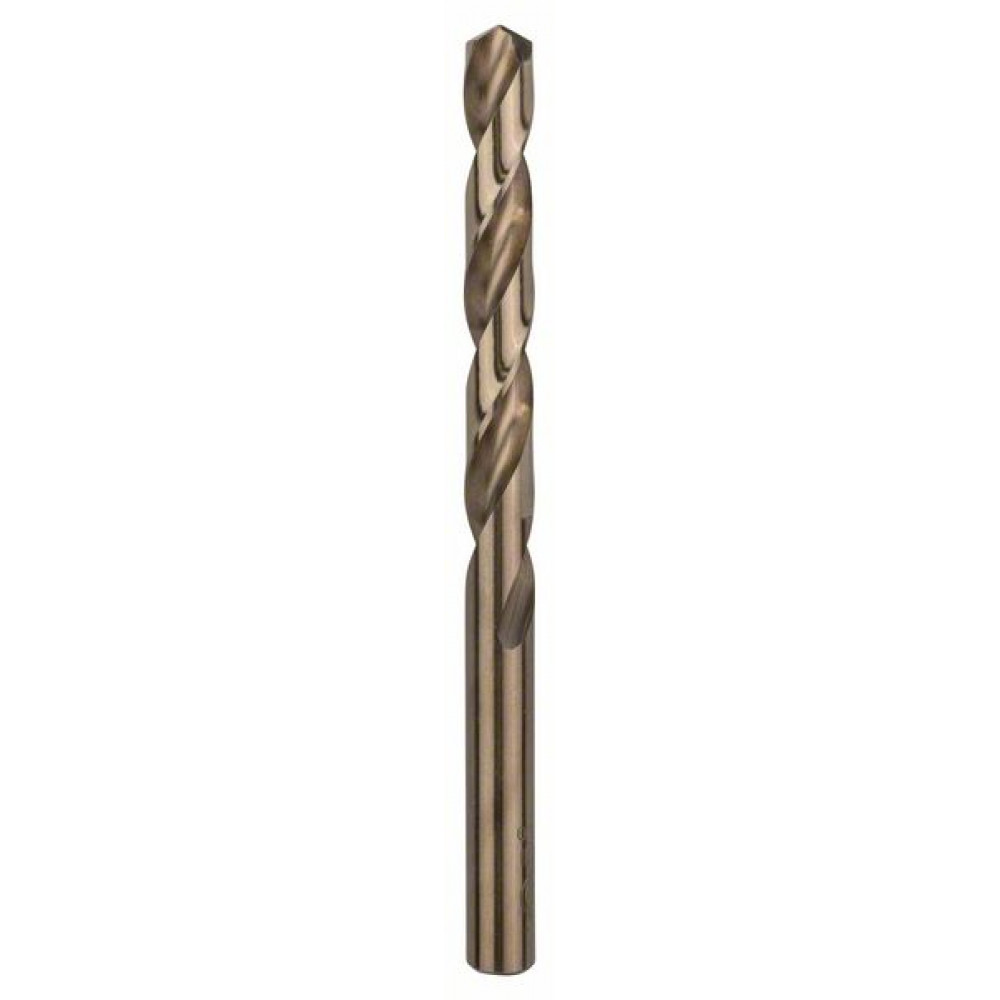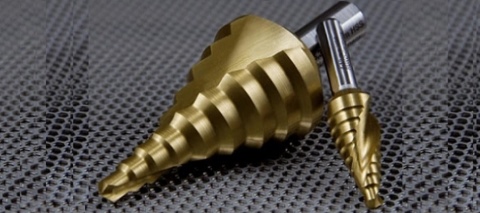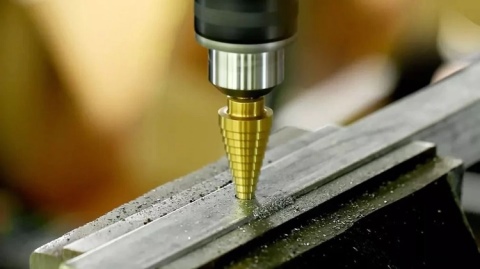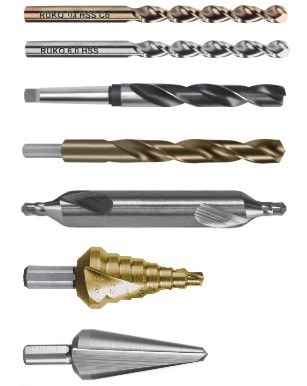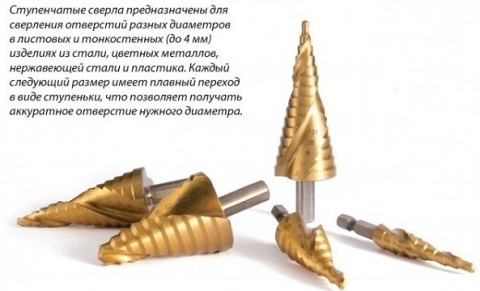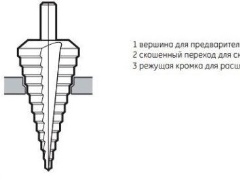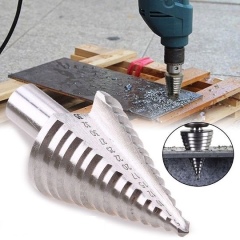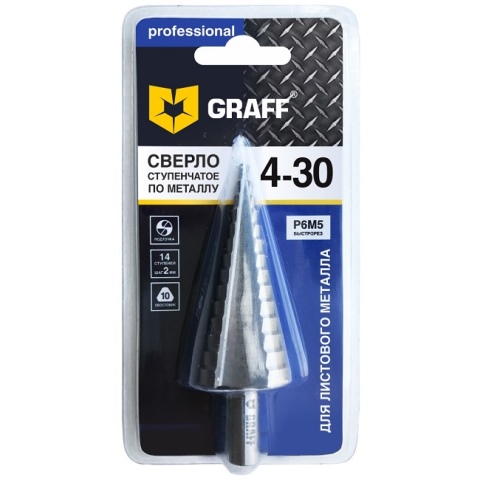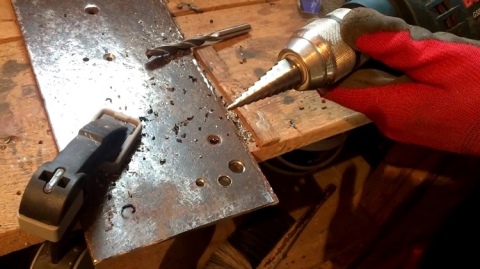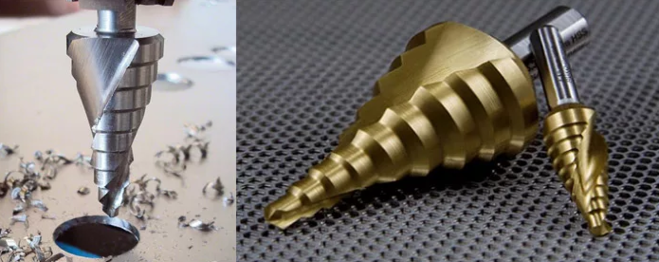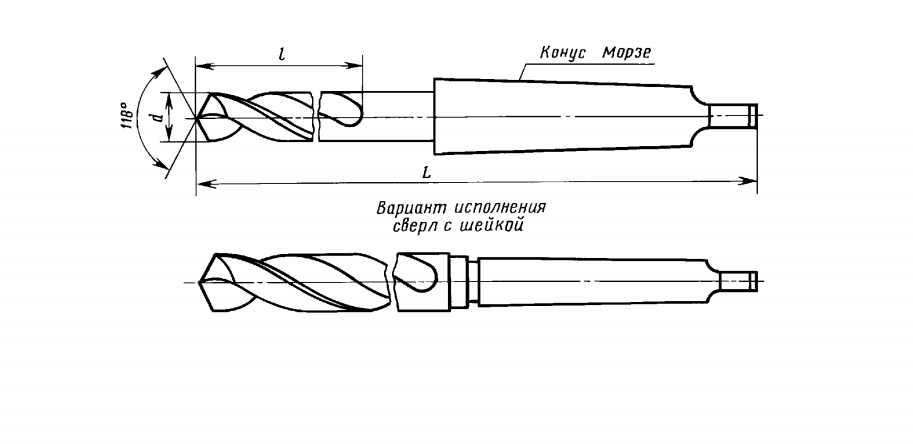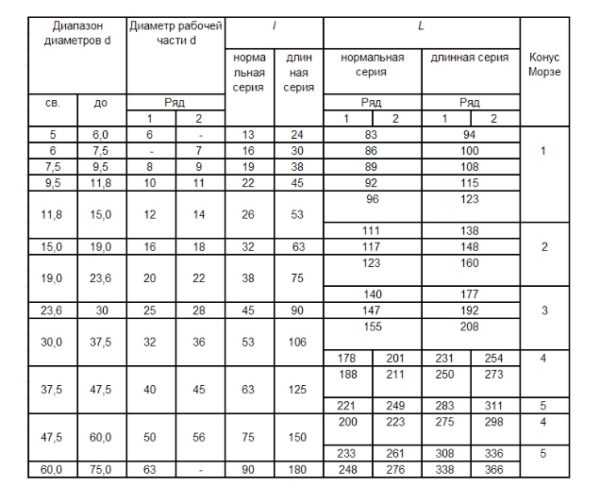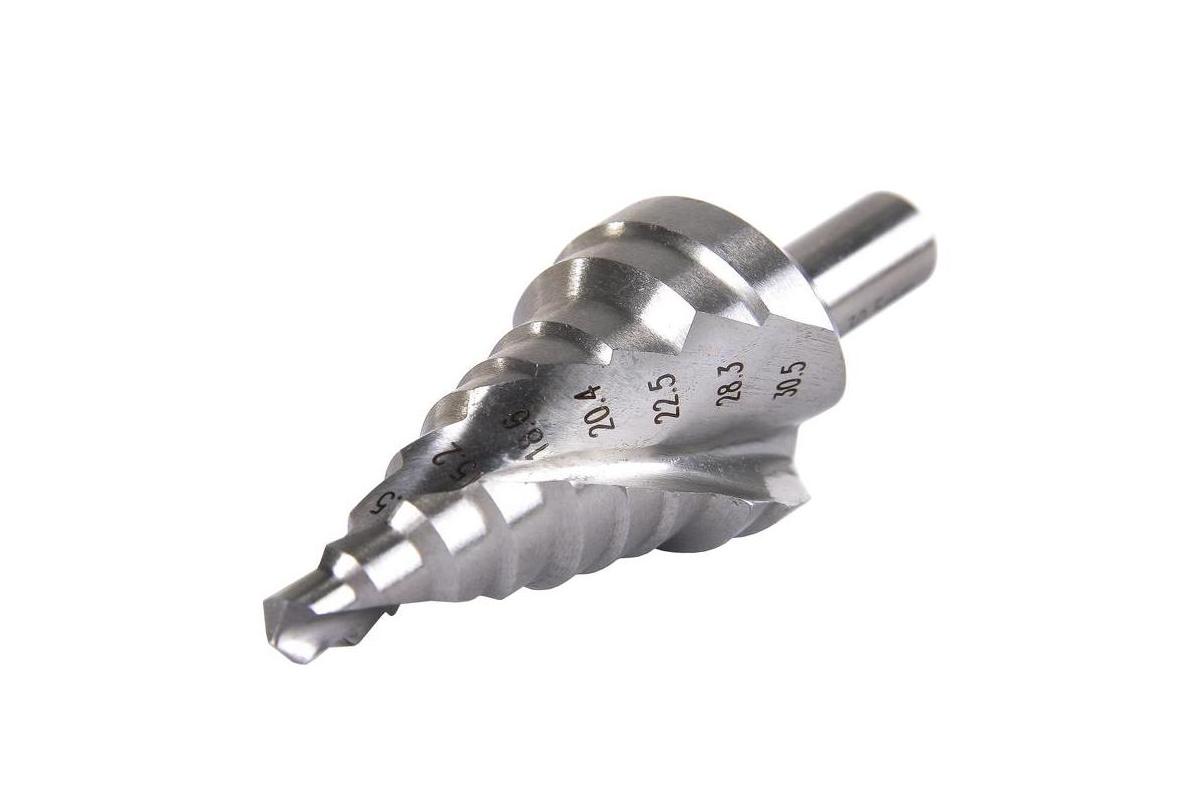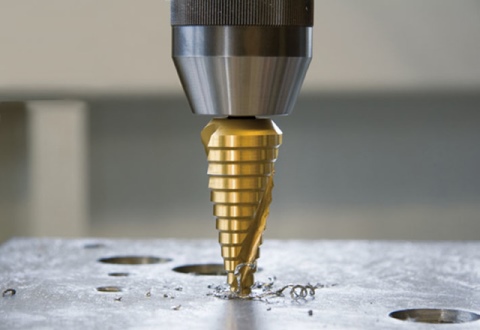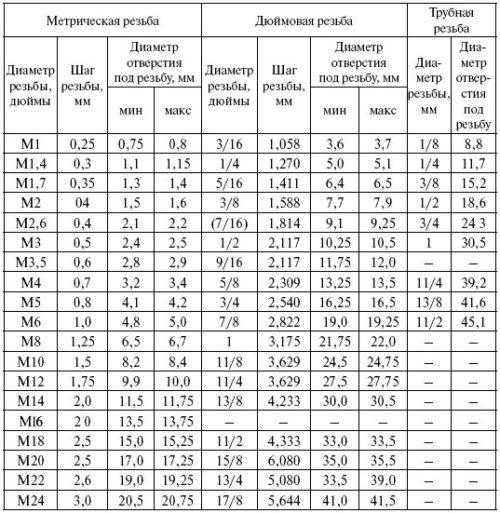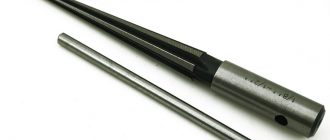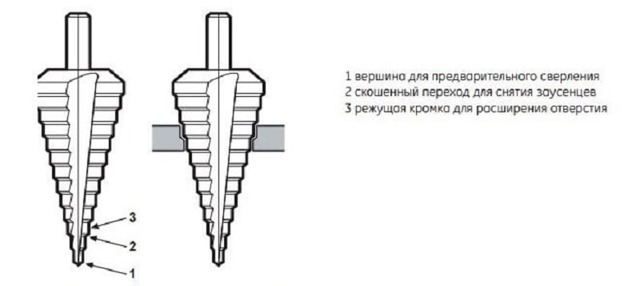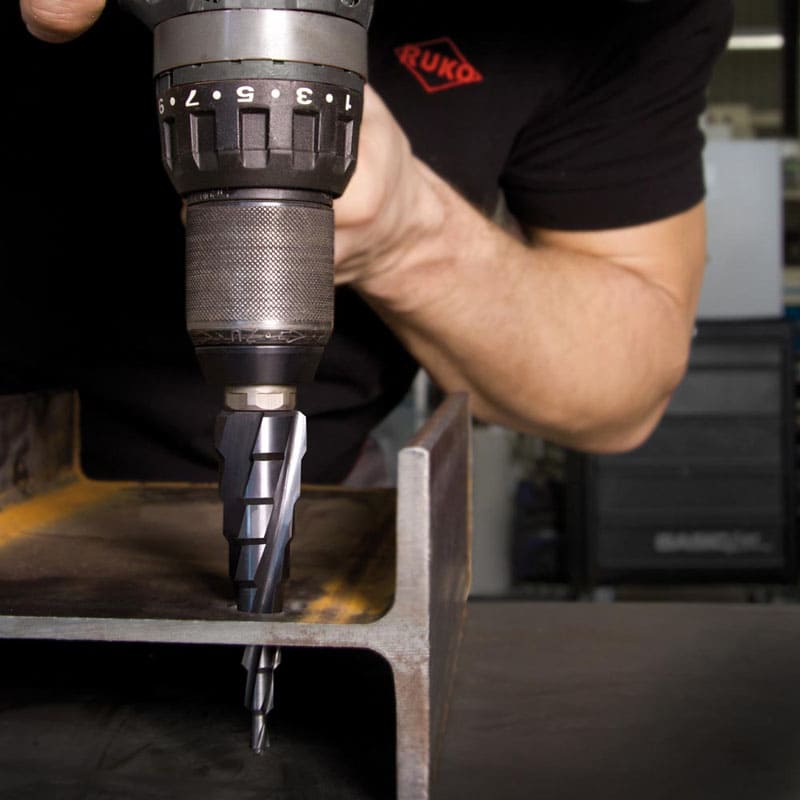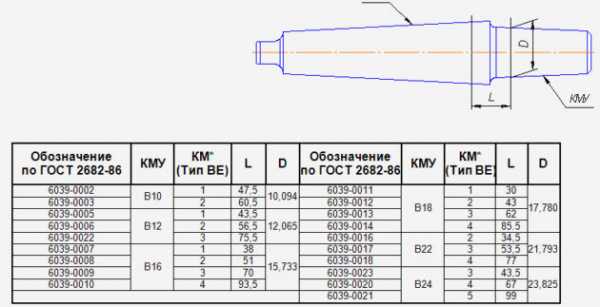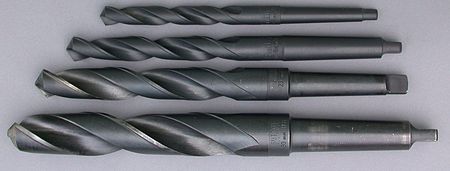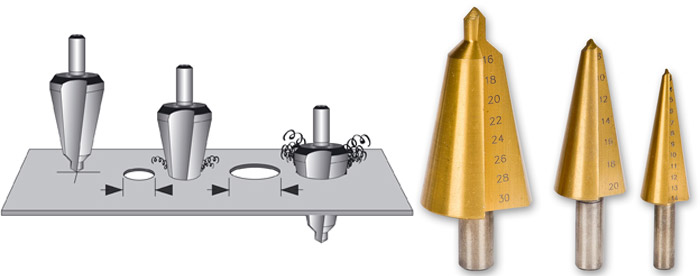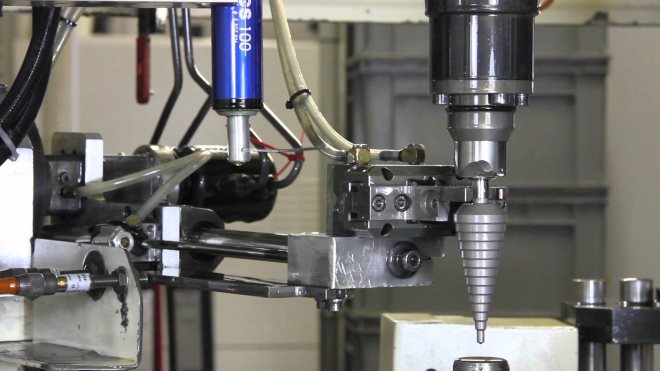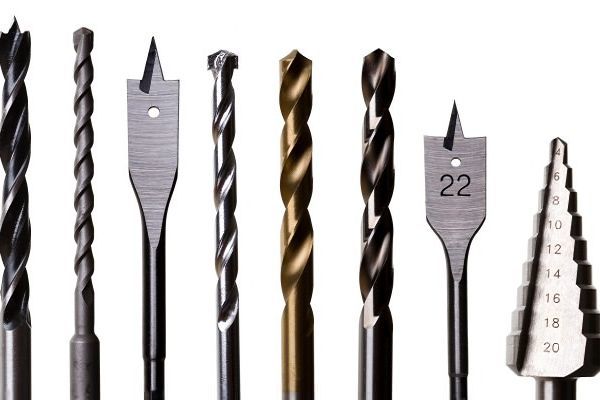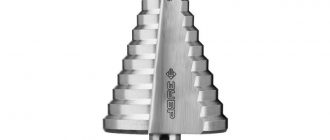3 Tapered shank drill - modern presentation
Modern conical drills are made from durable carbon steel or alloy steel. Manufacturers often use additional heat treatment of the surface of these tools in their manufacture. This makes them more reliable and at the same time protects against corrosion. Tapered shank helps increase productivity and improve hole quality. Due to this shape (conical), the drill easily comes out of the workpiece.
Typically, these drills are used to create various holes on a metal surface. They can also be used when holes are required on plastic, duroplastics or sheet steel (a tapered stepped drill does an excellent job with this). The shank or taper diameter can range from 6 to 12 mm. And the length of the cone is possible from 58 to 85 mm. Drills are selected depending on the diameter and depth of the future hole.
Recently, craftsmen are increasingly using a twist drill with a taper shank (GOST 10903-77) in their work. Usually they create holes in different parts using stationary machines. The size of these drills can be from 5 to 80 mm. The taper shank helps to significantly increase the contact surface of the drill bit with the head. This, in turn, helps not only to increase the accuracy, but also to increase the reliability of the fastening.
Today twist drills can be long, solid carbide, special for processing light alloys, difficult materials, and can also be additionally equipped with carbide inserts. This separation of these tools allows you to more accurately select them for certain types of work. This will help improve not only the drilling process itself, but will also make all the work better.
Types of stepped (conical) drills
As noted, cone drills are available with a smooth transition of the diameter and with a step, step. The stepped drills have found the greatest application, since they allow you to get a hole of a strictly defined size with smooth walls. A hole made with a smooth taper drill will always have a slight slope. In the case of working with thin sheet metal, this will be hardly noticeable.
In general, quality stepped drills can be classified by color:
- Gray metallic shade. Usually such a tool is made of low quality tool steel. Additional heat treatment during its manufacture was also not provided. There is no abrasive coating on the surface of the drill. Such drills should not be purchased if they are supposed to be used regularly, as well as work with thick and durable rolled metal.
- Black drills. Such a tool was heat treated during production. Steam treatment and subsequent quenching were performed. This treatment increases the hardness of the tool and increases its service life. But it is still not recommended to work with such drills with stainless and other high-strength steels.
- Dull golden color. A stepped metal drill, which has a pale yellow color, is made of metal with the addition of alloying additives, most often cobalt. Such a tool is hardened and then tempered, which relieves internal stresses and increases the strength and durability of the tool. These color drills can handle tough alloy and stainless steels.
- Bright golden hue.The tool of this color is the highest quality and is designed to work with high strength thick-walled steels. The steels from which the tool is made are obtained by adding titanium nitride and subsequent heat treatment.
Application area
Conical drills for metal are used for making holes in sheet and thin-walled metal. Typically, the thickness of the metal to be processed is from 1 to 4 millimeters and depends on the height of the drill step. If the step height is 4 millimeters, then the maximum thickness of the sheet or rolled metal that can be processed will be 4 millimeters, respectively. The stepped drill allows you to work even with thin sheet metal.
Note that there are also conical drills for processing not only metal, but also wood, plastic, drywall, textolite.
A conical drill (sometimes the craftsmen call it a carrot drill) is also distinguished by the fact that, when properly worked with it, the hole has practically no defects. Proper use of the tool allows you to get smooth walls and edges of the hole, the absence of burrs and cracks. After drilling, there is no need for additional hole machining. Therefore, craftsmen often use them in order to correct defects in holes obtained with another type of drilling tool.
A quality metal cone drill has hard, sharp edges, which allows it to work with metal with high density and hardness. Some drills are also abrasive coated, which further enhances their efficiency. Where another tool is powerless, it is often very convenient to use the type of drill in question.
The cone drill has a sharp tip, which allows drilling operation without preliminary punching and additional centering.
Design features and main characteristics
The design of twist drills, which are often called twist drills, consists of the following elements.
The working part has two grooves located along the helical line. They perform several functions at the same time: they form the cutting part, remove the chips created in the processing area, and provide coolant supply to the drilling area.
With this structural element, the tool is fixed in the chuck of the equipment used. The shank can be made with a special foot that makes it easier to remove the tool from the cone-shaped socket, or a driver that is involved in the transmission of torque from the chuck.
This technological element is responsible for the output when used for tool grinding.
Calibration part
This element looks like a narrow strip that continues the groove on the working part. This guiding part has another common name - "ribbon".
This part is made up of five cutting edges: 2 main, 2 auxiliary, which are located in a spiral along the axis of the drill, and 1 transverse, located at the end of the tool and having the shape of a cone. All of them are formed due to the intersections of the groove surfaces. So, the main cutting edges are the intersection of the front surface of the tool groove with the rear, auxiliary - the front surface of the groove with the surface of the calibration part, transverse - the intersection of the rear surfaces of the ribbons.
The high popularity of twist drills is associated with the following advantages.
- Tools of this type are distinguished by a large margin for regrinding the cutting part.
- Twist drills with a cylindrical or taper shank are distinguished by the best stability of their position during the drilling process.
- Due to the peculiarities of their design, such tools ensure timely removal of chips from the processing zone.
The main parameters of spiral drills with cylindrical and tapered shanks, the requirements for which are stipulated by GOST 10902 and GOST 10903-77, are listed in the table.
The values of all the above parameters are determined by the tasks for the solution of which it is planned to use the tool.
Twist drills are used not only for metal processing, but also for making holes in other materials such as concrete and wood. There are also multipurpose tools. The drills used for processing various materials differ from each other both in shape and design, and in their geometric parameters given in the corresponding GOSTs.
Depending on the configuration of the part clamped in the chuck, drills are distinguished:
- with a cylindrical shank;
- with a tapered shank.
To fix twist drills with tapered shanks on the equipment, as indicated by GOST 10903-77, universal adapter sleeves are used, the bore holes in which are made according to the Morse taper type. GOST-compliant tools of this type can be used to equip any equipment.
The advantages of the stepped shape
A type of cone drill is a stepped one. Its design differs in that the expansion of the cone diameter occurs in the form of a step. Each of them has a designated diameter, which makes it easier to work, freeing from constant measurements. A limitation on the thickness of the processed material is indicated on the edge. If the metal is thicker, it can be machined on both sides. The stepped drill has many attractive features:
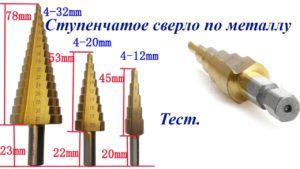 Metal step drill (cone)
Metal step drill (cone)
- it allows you to accurately cut a hole of a certain diameter;
- the cut hole does not require additional grinding;
- with one tool, you can cut a significant range of diameters - from 4 to 40 mm, which saves money and time;
- the step drill is excellent for metal sheets with a thickness of less than 1 mm;
- with its help, the edges of the hole made with a conventional tool are ground;
- the same element can be used to chamfer the product;
- the stepped device can be used both when working on a machine tool and in a hand tool, having previously provided for a strong fastening.
Sometimes, as a disadvantage, they cite the need to use a drill with a low rotational speed or excessive sensitivity to distortions during operation. There will be no distortions with careful attention to working with the conical device and following the instructions.
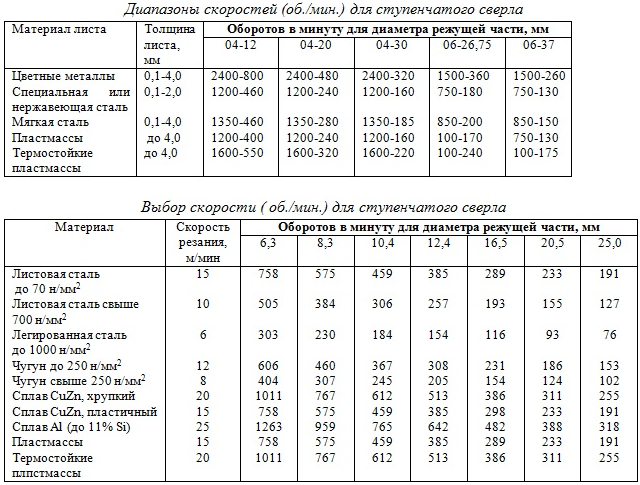 Range and speed selection for step drill
Range and speed selection for step drill
What are they?
The universal conical drill is a special attachment for rotating type electric tools. The drill has a cone-shaped working tip and a shank body, the end of which is machined in the form of a hexagon or a cylinder.
Conical drills are divided into 2 types.
- Smooth - they have a smooth surface of the working part, with which you can drill even strong steel, increasing the hole diameter depending on the degree of deepening of the drill. To get an accurate hole diameter, the drilling process needs to be paused periodically to take measurements. For ease of measurement, many manufacturers put special marks on their products indicating the size of the hole diameter.
- Stepped - this design, thanks to its steps, helps to more accurately and easily track the passage of the drill, which forms the desired hole diameter. The process of drilling with a step drill itself is performed more smoothly and accurately.

How to choose a cone drill
When choosing drills for metal, it should be borne in mind that they are expensive. It is recommended that you familiarize yourself with the product specifications before purchasing.According to the manufacturing standards of the fixture, they are made from steel alloyed with high quality metals and strength. Technical specifications:
- working surface diameter - from 5 mm to 50 mm;
- the length of the useful part of the cone - 58 mm to 85 mm;
- shank length - from 6 mm to 12 mm.
You can choose a drill for metal by the color of the working surface:
- gray color with a steel tint will warn the consumer that the material has not undergone heat treatment and is raw;
- black indicates the use of hardened steel;
- the golden color indicates that stresses on the working edge are eliminated in the product, and the surface is alloyed with high quality metals.

Choosing a cone drill
Step drill manufacturers
When choosing this tool, it is recommended to pay attention to the following manufacturers:
- MESSER;
- Bosch;
- TOP GRAFT;
- Practice.
Each type has certain properties and technical characteristics, as a result of the use of different materials.
Benefits of cone drills
Conical drills for metal differ from analogues in useful technical characteristics:
- using a tool, you can drill certain holes;
- after processing, additional grinding is not required;
- the use of this device allows you to make holes of various diameters from 4 mm to 40 mm, as a result, the cost of money and time is reduced;
- suitable for processing thin metal up to 1 mm;
- after drilling with a conventional drill, the conical tool grinds the edges of the product;
- used when chamfering on the edges of metal surfaces;
- cone drills can be used to work on machine tools and hand drills, if you provide a reliable fastening.
Disadvantages:
- when working on a hand tool, it is recommended to use low spindle speeds;
- misalignment can cause drill breakage.
Price
When choosing a cone-type drill, the consumer needs to pay attention to the material from which the tool is made. When applied to titanium cutting edges, the cost is tripled
The popularity of the manufacturer also affects the price. The average price is from 500 rubles to 5500 rubles.
Conclusion
Conical drills are efficient and cost effective in their place. When processing plexiglass, there is no need for a tool reinforced with plates, but a drill with a titanium nitride coating reduces friction, and, therefore, the risk of deformation. Sharpening is equally important: working with viscous material requires a well-sharpened, ground tool.
The video shows a fragment of using a taper shank drill:
Drilling is one of the common methods for making holes. Based on what size they should be obtained and in what material they are made, choose a tool. The twist drill is the most versatile and demanded.

